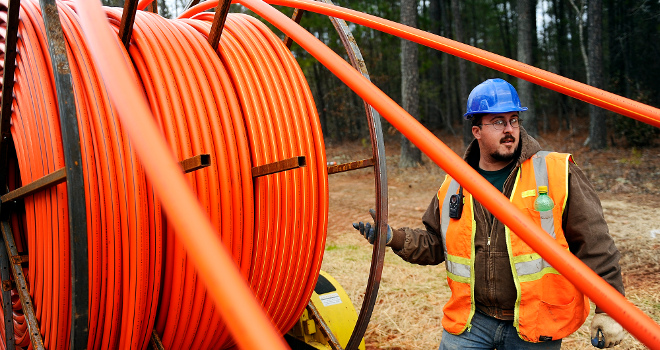The United States is behind three Asian nations when it comes to the deployment of ultra high-speed internet networks, according to a recent report from a British broadband data analysis firm Point Topic.
The U.S. had paltry 6.9 million subscribers to fiber-to-the-home broadband service in the first quarter of 2011, compared to 28.9 million in China, 20.14 million in Japan, and 9.5 million in South Korea, according to Point Topic’s global broadband deployment report, which gathers data from both commercial and government sources.
The 6.9 million subscriber number in the United States represents nine percent of the total broadband market, with cable and DSL subscribers making up the rest of the wireline broadband market.
That penetration percentage is markedly below those of the other Asian nations. Thirty-eight percent of China’s broadband subscribers used fiber-to-the-home in the first quarter of 2011, compared to about 26 percent for Japan, and 12.46 percent for South Korea.
Overall, China leads the world in terms of the number of broadband subscribers with 135.23 million subscribers; the U.S. has 88.7 million, Japan has 34.6 million and Germany has 27.16 million.
The most noteworthy number is the fiber-to-the-home number, however, since that’s the technology that the experts pinpoint as being the most durable and cost-effective form of information infrastructure that many policymakers think is important to keeping nations competitive.
“Our global competitiveness will depend to a great degree on deploying fiber networks or other forms of high-capacity networks, and in that respect, China has gone from virtually nowhere in the world rankings to being right now the largest in the world,” said Jim Baller a Washington, D.C., telecom lawyer and a longtime broadband advocate.
President Obama has made the rollout of broadband part of his competitiveness agenda. He mentioned the need for widespread broadband deployment in his 2011 State of the Union speech, and the Federal Communications Commission released its National Broadband Plan in March of last year.
But many in the telecom community (including Baller) don’t think the national goal of bringing broadband to 100 million American homes at download speeds of at least 100 megabits a second is ambitious enough.
“We have to recognize that everything that we do is increasingly going to be done through broadband connectivty,” Baller said. “The way business is going to be conducted, energy, security, environmental protection, entertainment, medicine, education, worker training — everything is going to be enabled and driven by information technology that runs on the internet-protocol.”
“That’s not just true for the U.S., but worldwide — the countries that provide their residents and their businesses and their institutions the most robust communications networks at the most affordable rates are going to be the countries that are the most successful in the emerging knowledge-based economy.”
Many municipalities and communities around the United States have taken matters into their own hands by building their own networks. They see such networks as important to their regional economic development.
Meanwhile, Google and Kansas City are experimenting with building a one gigagbit-per-second network.






